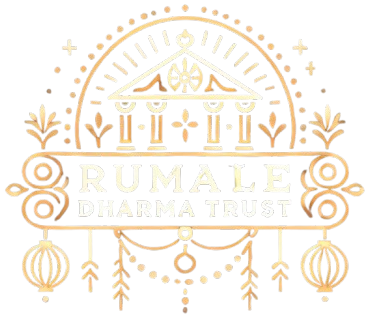The Legacy of Rumale Chennabasavaiah
A painter, freedom fighter, editor, and legislator—a man of diverse talents and unwavering dedication.
An Artist Addicted to Nature
If anyone in the cool shade of bougainvillea bush at Cubbon park heard some rustle, chances would be that it was Rumale Chennabasavaiah squatting and furiously welding his brush to capture on canvas colourful scenes in the park. Any place of colourful vegetation was the favourite haunt of the artist. He was fascinated specially by the gulmohur season.
Rumale used to be relentlessly in search of spots that caught his fancy, and when he found one he would start working on canvas oblivious of the curious onlookers. Thus, Rumale's presence could be felt in most of the beautiful places in City. His fascination was not limited to gulmohurs or bougainvilleaas. Other subjects too interested him. He was mostly an artist addicted to Nature and open areas.
An Unlikely Beginning
Rumale did not hail from a family of artists. When his brother late D.R. Chennarudraiah of Mysore Civil Service pursued him to learn painting at the Kalamandiram in Bangalore he merely wanted him to keep from 'mischief'. He might not have foreseen that his brother would one day shape himself into a distinguished painter.
A Man of Diverse Talents
Two personalities stand out prominently in the world of painters of the erstwhile Mysore State. Though there was a generation gap between them, both had many things in common. Both were staunch nationalists, always dressed in Khadi; both were tall and lean; both were concerned about the development of Fine arts in the State and welfare of artists. While A.N. Subba Rao took to teaching and established the popular Kalamandiram in Basavangudi, Rumale pursued a lonelier path. His was a chequered career. He was a person of diverse interests. He was a painter, freedom fighter, editor and a legislator. He was also the leader of Sevadal and the brain behind art sections in the Congress Swadeshi exhibitions in the State. He also published a booklet on artists.
As a painter Rumale was mostly figurative. He was more a Chronicler than an interpreter of his subjects. But he was partial to landscapes. This inevitably made him prefer open spaces, fresh air, beauty of sky, clouds and the colourful vistas. Though landscapes were his forte he had done some portraits too.
The Call of Freedom
In the mid 1930s the pure white Khadi clad young Rumale was conspicuous in the corridors and the class rooms of CTI Mysore, where he had joined to pursue higher studies in painting. He had the guidance of the masters of that period such as N.G. Pavange, Keshavaiah, S.G. Tankasale and others. But the call of the freedom movement was so strong that he kept aside his artistic pursuits to join the mainstream. This led to opening of a new chapter in his life.
He participated in the agitation for responsible government in the State and was jailed. He had also participated in the Salt Satyagraha and was jailed. After release, he worked for the reorganisation of the Sevadal and was its leader for some time. Next he went up the ladder to get nominated to the Legislative Council. He served for nearly eight years and later entered journalism to become the editor of Thainadu daily for sometime.
Spiritual Journey & Artistic Legacy
Meanwhile, he developed a spiritual interest and came under the influence of Sivabalayogi. He painted a couple of portraits as a tribute to his guru. He was also attracted by Tapasviji Maharaj who helped him to undergo Kayakalpa (rejuvenation process) twice. His interests also covered astrology and Naadisatra. Thus the bachelor Rumale was always engaged in some pursuit or the other.
Finally the call of the brush was strong and he spent the evening of his life mostly weilding it. In the CTI, Rumale had already revealed a highly individualistic streak in his works using water and oil mediums. His style had many features of impressionism and expressionism, but it had a distinct Rumale touch. Direct application of colours of the requisite tone instead of mixing, energetic strokes of brush and an overall fluidity in the scheme were distinctive features of his paintings.
He was so obsessed with nature that he spent long hours in river valleys and dry river beds to capture the colour and form on the canvas. the colourful painting world that is how able to possess his priceless pictures to-day.
